The Fantail Goldfish is one of the most beautiful and graceful fish in the hobby. If you are interested in keeping goldfish, including this fish in your tank would be great. Buying a fantail is like adopting a pet because you’re responsible for their life.
If you don’t feed or take care of them properly, your fantails will get sick and even die after some time. Goldfish are a type of freshwater aquarium fish that belong to the family Cyprinidae.
This family also includes other carp types, such as koi carp, common carp, grass carp, and more. This family has many different species, but the most commonly kept by aquarists is the Prussian carp (Carassius auratus).
This article will give you an overview of the Fantail Goldfish. I hope reading this article will help you decide if the Fantail Goldfish is the fish for you.
Table of Contents
- Species Summary
- Fantail Goldfish Complete Care Guide
- Fantail Goldfish Tank Size
- Fantail Goldfish Tank Mates
- Fantail Goldfish Tank Region
- Fantail Goldfish Food & Diet
- Water Requirements
- Filter
- Heater
- Lighting
- Fantail Goldfish Tank Decorations
- Cleaning The Tank
- Fantail Goldfish Potential Fish Diseases & Medication
- Are Fantail Fish Dangerous
- Are Fantail Goldfish Suitable For Beginners
- Conclusion
Species Summary
| Scientific Name: | Carassius auratus |
| Common Names: | Fantail Goldfish, veil tail |
| Max Size: | 6-8 inches |
| Aquarium Compatibility: | 10-gallon min. |
| Water pH level: | 6.0 to 8.0 |
| Water hardness: | 4 to 20 dKH |
| Appearance: | Deep and thick |
| Water temperature range: | 65° – 80°F. |
| Breeding: | Prolific breeders |
| Ease of Care: | Very easy |
| Lifespan: | 5-10 years |
| Origin: | Asia |
The Fantail Goldfish is a member of the carp family. Humans have kept goldfish for centuries, especially in China, where they originated. It was the Chinese who first created the domesticated goldfish we know today.
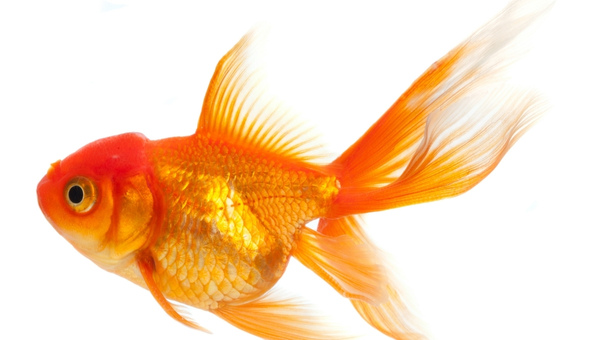
The Fantail Goldfish is one of the most popular aquarium fish, and for a good reason! The Fantail Goldfish’s body is covered with scales that can be red, orange, or white. It also has a huge dorsal fin and a double caudal (tail) fin.
This fish can be identified by its deep orange-red color and eyes that tilt upwards. Goldfish are hardy fish that can tolerate a wide range of water conditions, too – something you must consider before buying other tropical fish.
The Fantail Goldfish is very hardy and can adapt to a wide range of water conditions. This makes it an excellent candidate for beginners in the hobby. Fantails are also tame, meaning they stay small when kept in captivity (unlike their koi carp cousins).
The Fantail Goldfish can survive in different kinds of water. However, it will do best when kept in soft water with a neutral pH level. The temperature should be at least 65 degrees Fahrenheit or warmer to keep your pet active and healthy.
The Water A Fantail Goldfish needs a lot of oxygen and will produce significant waste. You’ll need to make frequent water changes (about 20 percent every week). But don’t change the water too often. Otherwise, your aquarium filter will not be able to keep up with the bioload that your fish will add to your tank.
Fantails are hardy goldfish and can survive in different kinds of water – but not all of them! If you live in an area with hard water, ensure you regularly add a liquid calcium additive to the tank.
This will keep the pH level between 6.0 and 8.0. For those who live in areas with soft water, you should add a dechlorinator to the water. This will remove any chlorine and chloramines that might be present.
I recommend the common goldfish and the celestial pearl danio for those new to keeping fish as pets. They should be easy for beginners as well. For more advanced aquarists, I suggest trying more colorful fish like the paradise fish and the neon tetra.
Check Ryukin Goldfish Care, Lifespan, Behaviour, Diet & All
Fantail Goldfish Appearance
The Fantail Goldfish is a domesticated version of the wild carp and has three different shapes: the veil tail, the twin tail, and the Ryukin. The ones with twin tails are called butterfly tail fantails, while those with Ryukin-like bodies are called ryukin’s.
The veil tail is tall, round, and has a long tail. It is the most popular form of the Fantail Goldfish and looks very similar to other fancy goldfish such as the oranda.
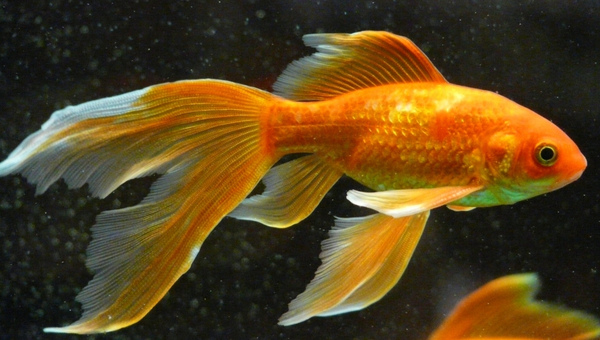
A twin-tailed fantail will have an almost flat body, so its sides bulge outwards at each side. Some say it is shaped like a butterfly with open wings. A ryukin, on the other hand, is short and deep-bodied. It has a hump in its back and a longer dorsal fin that makes it look like a dragon.
Fantail Goldfish usually have bright orange or white scales and shiny metallic ones. The eyes are small and dark in color (but not red!).
When buying a Fantail Goldfish, ensure you get one with a tall and deep body – they are more complex than the ones with flat bodies. The metallic-looking scales should be shiny (not dull) and shouldn’t have cracks or odd shapes. Also, remember that most of them can vary in color depending on whether or not they are healthy.
Their colors also depend on age. For example, younger fantails will have orange tails – but they’ll turn white as they get older. If you want to keep them in their best condition, change their water regularly and feed them high-quality foods.
Fantail Goldfish Size & Growth Rate
A Fantail Goldfish is usually about 6 to 8 inches in size but can grow more prominentrominentrominentrominent with the right conditions.
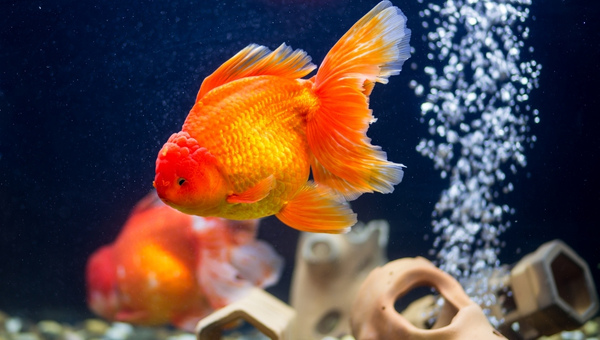
When they are young, fantails can be as small as two inches long. They will also have short tails and no metallic scales yet. It’s best to keep them in a 20-gallon tank until they reach three inches in length.
When it comes to tanks, you should remember that fantails proliferate and can get rather large at around 1 foot. They might also become aggressive if their territory is too small, so ensure you have an appropriate tank for them to swim around in.
Fantail Goldfish Lifespan
Fantails usually live for about 10 years as long as you take good care of them. In some cases, they can live up to 20 years – but those are very rare.
In the wild, fantails have a lifespan of around 15 years, usually due to their fast growth and high metabolism rates. Also, age may depend on how well their owners take care of them.
However, they only produce one batch of babies each year, so if you want more fish in less time, you might consider getting a different breed of goldfish.
Fantail Goldfish Breeding And Propagation
Fantail Goldfish only breed in the spring. Some owners, however, try to encourage them to produce all year round. Unfortunately, it cannot be easy and will cost a lot of time and money.
Breeding fantails is hard because they usually need huge tanks to mate and lay their eggs, and most tanks are too small to contain them.
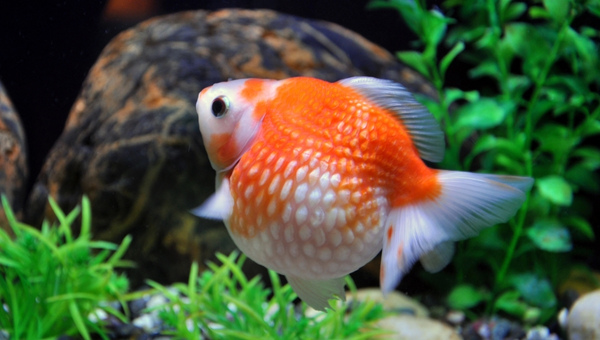
Another reason is that a Fantail Goldfish’s sperm only lasts a few hours after it is released. This means that the female won’t be able to lay any eggs until the male excretes more sperm which can take a lot of time.
They also have high fry mortality rates, particularly in the first month. This is because Fantail Goldfish are slower at developing their fins to be strong enough to swim around in the tank.
Fantails can eat mosquito larvae, so if you let them go outside or release them in your local pond, they’ll be able to help control mosquitoes! When it comes to feeding them, many owners prefer giving bloodworms because they’re nutritious.
Feeding them bloodworms will also make their color look brighter and more vivid.
If you want to breed fantails, make sure you put the female in a separate tank by itself for several days, as long as she isn’t showing any signs of illness or stress. You should keep the water temperature at 75°F and the pH level at 6.0 to 8.0.
If you notice that the female has recently laid eggs, don’t remove them, as they will eventually grow into adult fantails. Be sure to feed them plenty of high-quality foods so they can proliferate and stay healthy.
Once they’ve had their babies, the female fantail is done with her cycle for another year, but don’t put her back in the breeding tank because she could get stressed out and die.
Also, check Otocinclus Catfish Care Guide: Appearance, Lifespan, Food & Diet, Breeding & All
How Do They Reproduce
Fantails usually reproduce with the following steps:
- Males will build a bubble nest to attract females.
- When a female is ready, she will release eggs, and the male will fertilize them while they rise in the water.
- The female may eat the eggs if she feels threatened or stressed out by other fishes. Some owners will remove her from another tank for a couple of weeks.
- If the female doesn’t eat them, the eggs will hatch within 48 hours, and the fry will be free-swimming after 8 days.
- The young fantails need their separate tanks because adult fish often eat them if they aren’t careful.
Gestation Period And Pregnancy Signs
Fantails mate in the spring and usually give birth to their young in late summer. The gestation period can be around 3-4 weeks, and during this time, you should make sure both parents (and any other fish) aren’t allowed near the tank to avoid harming or eating the eggs.
All the female fantails will release their eggs every 1-2 days and usually lay between 50 – 200. The young fry will hatch after about 3 weeks and be free swimming by the time they are 8 days old.
Fantails can also change their color during pregnancy if you notice that they slowly start turning darker or lighter, but the color should return to normal when their pregnancy is over.
When pregnant, the female fantail’s stomach will become slightly more swollen and grow huge. They can be expected to show some hints of gold when you look at their sides from different angles.
Fantail Goldfish Temperament And Behaviour
Fantails are usually very slow, peaceful fish that barely pose a threat to other fish or owners.
Some owners have noticed that their fantails turn black during the winter months; this is normal as it’s caused by a lack of light and heat given off by the sun. If this happens, you can try adding a light or two to their tank if it’s big enough to hold them without making things too cramped for them.
If you want to handle your fantails, ensure you don’t do it while they’re spawning. Otherwise, they may get frightened and eat their fertilized eggs. They will rarely bite you when they’re in the mood to generate, but if you keep trying to pick them up when they aren’t ready, they may get stressed out and give you a nip.
All in all, fantails are some of the most excellent fish you can have because there’s nothing too harmful or dangerous about them.
They can be easily bred in their tanks, aren’t aggressive towards the owner, and the female only gets pregnant once a year. If you want to breed them in your tank, make sure you have no other fish living with them – otherwise, the eggs will get eaten when the mother feels threatened.
Regarding social behavior, fantails are very aggressive towards other tank mates. Even if you just put them in the same tank by accident, they may fight with each other until one of them dies.
As far as their behavior around humans goes, fantails are often very friendly because they’re intelligent and recognize their owners.
Also, fantails are excellent jumpers, so you should put a cover on their tank to prevent them from escaping.
You may also check Pipefish 101:Care, Appearance, Diet, Breeding, Lifespan & All
Fantail Goldfish Complete Care Guide
Here, we will share all steps to give the best care to your fish.
Fantail Goldfish Tank Size
Fantails can live in tanks that are at least 10 gallons, but the more significant the tank is, the better it is for your fantail because they will be happier and healthier if they have enough room to swim around. Also, avoid putting plants or decorations near their eggs because parents tend to eat them.
Try to put lots of great hiding places in the tank so your fish will always feel safe and comfortable. You will need a filter that can keep up with the bioload produced by your goldfish.
It’s best to have two filters instead of just one because this will ensure the water is constantly being cleaned, and you won’t have to worry about any water changes.
Fantail Goldfish Tank Mates
Fantail Goldfish can live with goldfish and other slow and other peaceful fish.
Also, if you decide to put your fantail in a tank meant for more than one fish, don’t overstock the tank, as this will make the water quality much worse for all of them.
However, if you keep more than one fantail in a tank together, make sure not to put them too close together, or else one of them could get stressed out and die. Also, please don’t bother to put your fish when spawning because they could get frightened and eat their eggs.
Here are the friendly fishes for Fantail Goldfish:
- Mollies
- Swordtails
- Rasboras
- Danios
- Tetras
- Guppies (female)
- Cherry Barbs
- Bettas
- Gouramis
- Other Types Of Barbs (except black diamond and red-eye tetras)
Fantail Goldfish Tank Region
Although fantails can swim in any tank, they usually prefer to swim in the middle or near the top. When you go near their eggs, make sure not to startle them, especially while they’re spawning, because they could get frightened and eat their eggs!
Fantail Goldfish Food & Diet
Fantail Goldfish is omnivores in nature. Fantails should only be fed three times a day because it’s dangerous for them to overeat at once. If you’re feeding your fantail pellets, break them into smaller pieces before putting them in the tank because they may choke on them if you don’t.
You should also give your fantail fish food to help keep their fins and tails strong so they can swim properly. Otherwise, they will get sick and die over time.
If you want to feed your fantails live food, it’s alright to do so as long as you can buy bloodworms or brine shrimp. But make sure they’re small enough for the fantails to eat because it may be dangerous if they swallow something too big.
Also check Bichir Ultimate Care Guide: Tankmates, Breeding, Diet, Types & All
Water Requirements
Fantails can live in water that varies between room temperature and 68 degrees, but the ideal temperature is around 65° to 80°F because it’s easier for them to stay healthy.
You should only need to change about 20% of the water every week because fantails are very sensitive to chemicals and would get sick if you changed too much at once.
Also, ensuring the water is as clean as possible is essential because fantails could also get sick if their tank becomes dirty.
If your fantail starts acting strangely or stops eating, you can test the water for ammonia and nitrates using a testing kit and then change about 30% of the water every week until they’re clean again.
You should keep the pH level between 6.0 to 8.0 and the dGH level between 4 to 20 because fantails are very fragile and could get sick if their tank’s conditions are not right.
Filter
It’s best only to use filters meant for small tanks or tanks that contain one fantail fish because they’re susceptible and cannot handle strong currents. The filtration you use must also be strong enough to keep up with the bioload produced by your goldfish.
You can choose between an under-gravel filter and a hang-on-the-back (HOB) filter. Whichever one you use, ensure it is efficient at removing waste from your water.
You may also check Black Neon Tetra 101: Best Care Guide, Species Summary & All
Heater
The Tank Set-up You will need to use an aquarium heater when keeping the Fantail Goldfish in your tank because this type of goldfish prefers warm water. But don’t set your heater too high. You need to allow for some variation in water temperature.
Remember, fluctuations in water quality are more harmful than constant changes. Fantails are very sensitive to heat, so it’s best to use a heater at optimum temperature because they could overheat and die if the water temperature is too high.
Lighting
You can depend on sunlight or fluorescent lights as long as you don’t leave them on for more than 8 hours daily.
It’s best to place the tank in an area of your house with plenty of sunlight and a temperature between 60° to 80°F.
Fantail Goldfish Tank Decorations
You should also include some decorations in your tank, but don’t overdo it. The Fantail Goldfish is not an active swimmer. You can use rocks or driftwood to create hiding spots for your fish.
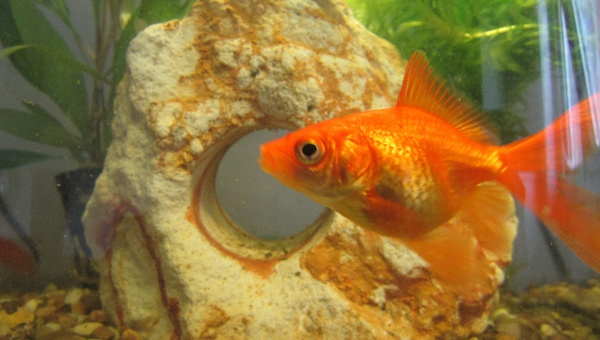
Make sure you don’t have sharp edges; these can damage your fish’s delicate scales. It’s best to avoid using rocks without holes, decorations with sharp edges, driftwood, and live plants because the fantail might accidentally get caught on them and get hurt.
Also, check Columbian Shark 101: Care, Disease, Breeding & All
Cleaning The Tank
You should only need to clean the tank once every month or two because fantails are very sensitive and could get sick if you tend it too often.
Use hot water around the same temperature as their tank’s water when cleaning it, but make sure you dry everything before putting the decorations back in.
You should clean your fantails’ tank by changing about 30% of the water, cleaning the gravel, and scrubbing any algae from the tank walls.
Fantail Goldfish Potential Fish Diseases & Medication
- Cloudy Eye: If a goldfish’s eye is cloudy, it has a sick body, and you should separate it from the other so they don’t get too ill. You can treat goldfish with clouded eyes by putting them in a quarantine tank with clean water about 5 degrees cooler than their tank at home.
- Fin Rot: If a fish’s fins start to look like they’re deteriorating and becoming discolored, it has fin rot, and you should immediately treat it with an aquarium salt medication.
To stop fin rot from progressing, you should raise the water temperature to about 86 degrees and give the affected fish extra vitamins to strengthen their immune system.
- Anchor Worms And Fish Lice: If a goldfish has red or white worms sticking out of its body, it has anchor worms, and you should immediately treat it with an aquarium salt treatment. If you don’t, the fish will die from a lack of oxygen because the worms attach themselves to their gills.
- Ich: Ich is a disease that makes a fish’s body look like it has white powder growing on it. It’s best to raise the temperature in your tank to 86 degrees and add aquarium salt so the ich can die off.
- Constipation: Constipation occurs when food gets stuck inside a goldfish and blocks its digestive system.
You should feed your fish smaller portions of food more often instead of one big meal, never use small gravel in its tank because it might swallow the pebbles, and make sure you clean out any uneaten food after 30 minutes.
Also, check Firemouth Cichlid 101: Diet, Size, Care Guide & All
- Dropsy: Dropsy causes a goldfish’s scales to look like they’re sticking out of its body, and you can recognize it by looking at your fish’s eyes.
Dropsy is caused when a goldfish isn’t eating, so if this happens to one of your fish, you should immediately feed it nutritious foods like peas and lettuce.
- Cotton Wool Disease: The cotton wool disease occurs when a goldfish’s skin starts getting thicker and forming fibers. Treating cotton wool disease is best by raising the water temperature and adding aquarium salt.
- Tail/Fin Rot: Tail/fin rot is caused when a fish’s tail or fins stop growing back after they get smaller, so you should quickly treat it with an aquarium salt treatment before it spreads to other parts of its body.
- Mouth Rot: Mouth rot occurs when a fish’s mouth gets darker, and its teeth will soon fall out. To treat mouth rot, feed your fish quality fish food with vitamins in it instead of living foods like bloodworms because it might have an infection if you do that.
Also, give your fish marigold petals and rainforest leaves to make its body healthier.
- Dropsy And Swim Bladder Disease: Dropsy and swim bladder disease cause a goldfish’s scales to become bumpy or bulging, but different problems cause them. Dropsy is when the scales on a fish’s body start looking like they’re sticking out of its body, but it’s caused by constipation.
Swim bladder disease is when a goldfish can’t control how buoyant it is in the water because something is wrong with its swim bladder. To treat these issues, feed your fish quality food with vitamins instead of living foods like bloodworms.
Also check Royal Pleco Best Care Guide, Species Summary & All
Are Fantail Fish Dangerous
Unlike some fish, Fantail Goldfish don’t have sharp teeth that can hurt other fish. However, fantails are still just as dangerous because they’re tough to take care of and can spread diseases to other fish in your tank that might not be able to handle the infection well.
If you want a pet that is less likely to cause problems, try a beta fish or another type of goldfish instead.
Fish can carry diseases that may infect you or other fish. You should wash your hands after touching a fish and quarantine new goldfish in a separate tank for two weeks before introducing them to your main tank to ensure they don’t have any diseases.
Are Fantail Goldfish Suitable For Beginners
Fantail Goldfish can be very hard to care for, even for experienced goldfish owners. They’re more likely to get sick and die from infections because they have nowhere for their body fat to go when it expands to make babies.
If you don’t want a ton of extra work, you should probably get another type of goldfish because fantails aren’t very hardy fish.
Conclusion
Fantail Goldfish are very hardy fish, which makes them too hard to take care of. They usually don’t live long enough to make it worth your while.
If you want to get yourself a pet that’s less likely to cause problems and more likely to be able to reproduce quickly, you should probably try getting another type of goldfish instead.
They can be a bit delicate, and you should pay close attention to their water conditions to keep them healthy, but they can adjust to most kinds of water.



